Trekking to Everest Base Camp as a beginner is indeed possible and can be a memorable experience.
Make sure to learn about logistics, training, the best time to visit, food, accommodation, permits, and other essentials for a safe and fun first-time trip to EBC. This guide for beginners has everything you need to know about a successful trek to Mount Everest.
The EBC Trek in Nepal is an iconic excursion, offering captivating mountain views and immersing you in the rich Sherpa culture.
If you’re new to trekking, reaching the base of Mt. Everest will make you feel amazed and accomplished. It may be your first time, but it will be the experience of a lifetime.
This ultimate beginner’s guide to EBC will serve as your compass, providing you with essential information and helpful tips.
Table of Contents
- Insights on the Everest Base Camp Trek for Beginners
- 14-Day Everest Base Camp Trek Itinerary for First-Time Hikers
- 12 Tips You Should Follow for a Trek to Everest Base Camp as a Beginner
- Check permit requirements for Everest Base Camp Trek
- Choose the best time
- Calculate costs before joining the trip
- Choose the right accommodation facilities
- Get yourself used to basic toilet facilities.
- Don’t expect a star hotel shower facility on the Everest Base Camp Route.
- How can you wash your clothes during the Everest Base Camp Tour?
- Understand what food are you going to eat.
- Stay hydrated always with different drinking water options
- Get a guide or porter if you are trekking to Everest Base Camp as a beginner.
- Travel Insurance is a must for first-time trekkers to EBC.
- Choose the right trekking company for the Everest Base Camp Trek.
- How hard is the Everest Base Camp Trek for beginners?
- Essential Gear and Equipment List for Beginners on the EBC Trek
Insights on the Everest Base Camp Trek for Beginners
The trek to Everest Base Camp (EBC) is a dream excursion for every adventurer around the world, be it a novice hiker or an experienced one. Though for a beginner trekker, it may sound daunting, it doesn’t have to be. With the necessary planning and preparation, everything is possible.
First, let’s give you some important facts about trekking to Everest Base Camp. As a first-timer, it’s important to know where and how you will walk.
The EBC trek starts at Lukla (2,800 m/9,200 ft.) and makes its way to base camp (5364 m) and finally to Kala Patthar (5,644 m/18,519 ft.), the highest point of the trek.
- Activities Involved: Trekking and Hiking
- Duration: 12-16 Days
- Starting Elevation: 2,800 m (9,200 ft.) at Lukla
- Maximum Elevation: 5,644 m (18,519 ft.) at Kala Patthar
- Start and Ending Point: Kathmandu
- Best Time to Visit: Spring (March to Early May) and Autumn (September to early December)
- Difficulty Level: Moderate to Challenging
- Accommodation: Teahouses in the Mountains and Hotels in Kathmandu
- Transportation: Flight (To/from Lukla) and Private vehicle to travel in and around Kathmandu
14-Day Everest Base Camp Trek Itinerary for First-Time Hikers
When you are traveling to Everest Base Camp for the first time, make sure you have acclimatization days included in the itinerary. It’s essential. Don’t take the short itinerary to EBC.
The included rest days will help you acclimatize to the high altitude, reducing any consequences you may have from altitude sickness.
Here’s the brief 14-day itinerary for rookie trekkers:
- Day 1: Arrival in Kathmandu (1,400 m/4,600 ft)
- Day 2: Fly to Lukla (2,860 m/9,184ft) and Trek to Phakding (2,652 m/8,699 ft): 45-minute flight, 3-hour trek
- Day 3: Phakding to Namche (3,440 m/11,283 ft): 6-hour trek
- Day 4: Acclimatization Day at Namche: Hike to Everest View Hotel (3,962 m/12,995 ft)—4 hrs trek
- Day 5: Namche to Tengboche (3,860 m/12,680 ft): 5 hour trek
- Day 6: Tengboche to Dingboche (4,410 m/14,464 ft): 5 hour trek
- Day 7: Acclimatization Day at Dingboche: Hike to Nagarjun Hill, a 5-hour trek
- Day 8: Dingboche to Lobuche (4,910 m/16,105 ft): 5 hour trek
- Day 9: Lobuche to Gorak Shep (5,181 m/16,990ft) and Hike to Everest Base Camp (5,364 m/17,594 ft) 8-hour trek
- Day 10: Gorak Shep to Kala Patthar (5,545 m/11,283ft) and Trek to Pheriche (4,210 m/13,810ft) 7-hour trek
- Day 11: Pheriche to Namche (3,440 m/11,283 ft): a 7-hour trek
- Day 12: Namche to Lukla (2,860 m/9,184 ft): 7-hour trek
- Day 13: Fly back to Kathmandu from Lukla.
- Day 14: Final Departure
If you’re still unsure about the itinerary, add some rest days near Thyangboche Monastery or Thukla before heading to the base camp. Plus, if you have three to four extra days, add Gokyo Lakes to the itinerary to add more adventure to your tour.
12 Tips You Should Follow for a Trek to Everest Base Camp as a Beginner
Check permit requirements for Everest Base Camp Trek
As a first-time trekker, you may not have the idea of getting permits for a trek to Everest Base Camp. Thus, here we have listed the two permits required to travel in and around the Everest region:
Sagarmatha National Park (SNP) Permit
The EBC trail lies inside the Sagarmatha National Park, which is a protected area. So, you must obtain the Sagarmatha National Park Permit to enter this park. You can get the permit from two places: Bhrikuti Mandap, Kathmandu, or Monjo.
The permit cost is NPR 3,000 per person for foreigners, NPR 1,500 per person for SAARC nationals, and NPR 100 per person for Nepalese. All these costs are excluding VAT.
If you’re trekking solo, make sure you get these in Kathmandu if you have time. Getting permits in Monjo will be time-consuming as you have to wait in a long queue. Also, when traveling for the first time, you may forget about the permits. Many novice trekkers do so and run into problems. Nobody wants to run into a problem when you are on the tour; thus, getting it in Kathmandu is highly recommended.
But when you are traveling with an agency like Heaven Himalaya, you don’t need to worry about this. The agency will get this for you.
Note: This SNP permit has to be shown at various checkpoints. Henceforth, make sure you keep this with you every time.
The Khumbu Pasang Lhamu Rural Municipality Permit
The local government of Khumbu Pasang Lhamu Rural Municipality issues the local entry permit. It was first introduced on October 1, 2018. The Permit fee is NPR 2,000 per person for the first four weeks and NPR 2,500 per person for each additional four weeks. This permit fee doesn’t include VAT. You can get this permit at the Sagarmatha National Park counter at Lukla or Monjo.
Note: You can’t get this permit in Kathmandu.
Required documents for Everest Base Camp trekking permits:
To obtain both permits, you need to fill out a short form. Then the form has to be attached with a photo and your passport details. Kindly note that these permit fees are payable in local currency only. If you are trekking with a tour operator, they will arrange these permits. Otherwise, you will need some Nepalese cash with you.
There are ATMs, and money exchanges in Lukla too, but they aren’t reliable. Thus, exchange some local cash in Kathmandu or other cities you stay in.
Note: You can use ATMs to get Nepalese currency.
Choose the best time
The success rate for the EBC Hike is about 90% for beginners who choose the perfect weather or hike in season. Thus, choosing the perfect season of the year is the first step to the successful completion of the trek.
The best times for the Everest base camp trek are March to May, spring, and September to November, autumn. Both seasons offer stable weather conditions and the best mountain views.
But, since this is your first time trekking to Everest Base Camp, we recommend you travel only from mid-March to mid-May and from October to mid-November. It’s because, due to climate change, the monsoonal rain is sometimes delayed and can go up until September. As of early March, it’s still cold and freezing in the Everest region.
But, from mid-March to mid-May and from October to mid-November, you will neither encounter monsoonal rain nor heavy snowfall. The trail is dry with pleasant temperatures for hiking. Also, the visibility is excellent.
Spring (March-May)
The most popular months for trekking in the Everest region are March, April, and May. You will experience moderate temperatures, clear skies, little to no rain, and a lower chance of snowfall. The forest trails are also blooming with rhododendron flowers, adding extra beauty to the trails.
May is the month of Everest summit expeditions. Thus, the base camp is also full of colorful tents. You can even have interesting conversations with legendary summiteers, as you have a high chance of meeting them on the way.
Day lengths are long. The skies are clear, with amazing mountain views. Henceforth, planning your Everest Base Camp Trek in May is a good sign for successful completion.
Autumn (September-November)
The other popular trekking months are September, October, and November. These months are again best for rookie travelers based on the weather conditions and mountain views.
There is no chance for rainfall, but you might expect a slight snowfall at the end of November.
The trail is dry; the temperatures are moderate, and it is perfect for day hiking. However, these months are the busiest. You need to book accommodations and flights in advance.
Summer/Monsoon (June-August)
The monsoon season, which starts from June to early September, is not the best time to travel to the base camp. Due to rainfall, trails get muddy and slippery, making for bad trekking conditions.
Apart from the wet trails, which lead to landslides, the mountain views are also blocked by rain clouds. At lower elevations, temperatures are warmer and humid.
However, it doesn’t rain all day long, so it is doable in the monsoon as well. But we don’t recommend any tours to Mount Everest in the monsoon, especially for beginner hikers.
Instead, if you would like to go on a challenging adventure, then the tour is double in the monsoon as well. All you need is the proper rain gear and sturdy hiking boots for slippery, muddy trails.
When walking to base camp as a beginner, you should have a few extra days in your itinerary. There are frequent flight delays and cancellations, as weather conditions are mostly unstable and the sky is cloudy.
Winter (December-February)
Everest base camp hikes are still possible in winter, but temperatures drop to minus. Sometimes there is a lot of snow, so trekking at high altitudes will be tricky.
We don’t recommend trekking in the winter for first-time hikers.
But still, if you want to avoid the crowds and challenge yourself, then you can go for it. Bring warm gear and proper equipment. Remember, it isn’t as easy as in other months.
Calculate costs before joining the trip
The cost of the trek to base camp varies with group size, duration, accommodation type, time of year, and services you choose. The absolute cost of the EBC trek is not fixed, so you can expect to spend somewhere between $999 and $4999.
You can check the cost of Heaven Himalaya’s Everest Base Camp Trek here.
The cost of the Everest base camp trek itinerary varies primarily based on the type of accommodation, such as standard or luxury. For this reason, companies mostly have two packages designed as budget and luxury treks to EBC.
First, define a budget. Then decide which type of travel package you would like to go for.
Standard or budget packages also have excellent hotels included. But the luxury option will have 5-star accommodations that are the best in the city or the best options in the mountains.
When calculating the budget for your trip as a beginner, keep some extra money for emergencies as well.
For example, there’s an option for a helicopter to return to Kathmandu from Gorakshep after the EBC trek. This is for those who like a more comfortable tour and also have a limited timeframe. But, if you ever have a hard time walking but want to see Everest, then you can always take a Mount Everest helicopter tour from Kathmandu.
Moreover, the price of the EBC package comes down if you have more people in the group. For instance, the standard package per person is 1 person for $1500, 2 people for $1300, 4 people for $1200, and 5 people for $1000.
The cost of the EBC trek package is normally high during the peak trekking season. Flight costs and accommodation charges are also high during this time.
Choose the right accommodation facilities
As a beginner, you might worry about how you will spend your night along the trail. Like Nirmal Purja said, “Fear is not in the blood”. Be motivated and expect the best.
As we mentioned earlier, there are a series of basic tea houses and highly luxurious hotels along the trail.
A teahouse is the best accommodation option while trekking to Everest Base Camp. Local Sherpa people with rich Sherpa culture run teahouses. Each room consists of two beds and a small table at the side.
Almost every guesthouse on the EBC trail has comfortable and clean rooms. They offer excellent service and healthy food. Some of them also have hot showers, electric blankets, and Wi-Fi services. But a few teahouses might charge you an additional fee, especially at higher elevations.
Teahouses at lower elevations have better rooms and bathrooms than those at higher altitudes.
Likewise, there is also an option for luxury lodge accommodations. Despite the high cost, the luxury room has a comfortable bed, electric heating, a private bathroom, and hot water.
Lastly, there’s also the option of camping accommodations on the base camp itself. However, it is only considered by the expedition team during the Mount Everest climb. Since tea houses along the route are easily accessible, camping is avoided by trekkers.
Get yourself used to basic toilet facilities.
All the teahouses along the Everest Base Camp Trek have toilet and shower facilities. But that doesn’t mean you should increase your expectations. Everest is still a remote area. So it is good to bring some toiletries such as toilet paper, wet wipes, and sanitizers for your comfortable stay.
Well, toilets are Western style, while in some places there are traditional squat styles. At high altitudes above 4,000m, most lodges have squat toilets. At lower altitudes, you can also find Western-style bathrooms.
Don’t expect a star hotel shower facility on the Everest Base Camp Route.
After a long day of walking, you are full of sweat and tired. Then you need showers to clean and relax. You’ll get hot shower facilities in Lukla, Namche, and Phakding. They have options for solar, electric, or gas geysers.
Be careful; most teahouses charge you an extra amount for using the hot water services, so ask if it’s free before using it. However, if you opt for a luxury trip, then you will get hot showers in the package.
After Namche Bazaar, as you ascend, you will get hot water in a bucket for the shower. This will cost you some extra cash; it is excluded from the room cost.
Showering is not always possible when you are above Tengboche. So, better bring wet wipes and dry shampoo.
How can you wash your clothes during the Everest Base Camp Tour?
Carrying a lot of clothing on the EBC trek is not an effortless task. If you are going to carry it yourself, then it’s physically straining. Otherwise, if you use porters, then it’s challenging for them as well. Also, you can’t exceed the luggage weight of 15 kg on the Lukla flight.
Thus, take only limited clothes and wash them as needed. Every Everest Base Camp Tea house has a washing place close to the backyard. Some lodges do offer handwashing services as well. You can consult with your trek guide beforehand.
Note: You can do your laundry during the acclimatization day at Namche or Dingboche.
Understand what food are you going to eat.
The Everest Base Camp trek is physically challenging for first-time trekkers. Food is essential to maintaining your stamina and energy level to trek all day.
As a newbie, you need a proper diet plan to feed your body during the trek. The right kind of nourishment provides you with energy and helps to maintain your stamina level.
Almost every teahouse on the EBC route serves hygienic food. All accommodations have a similar Everest Base Camp food menu. There is a three-meal plan that starts with breakfast, midday lunch, and dinner.
For breakfast options, bread toasts, pancakes, rice puddings, and oatmeal meals are popular.
For lunch and dinner, you will enjoy Dal Bhat, a combination of rice, lentil soup, and seasonal vegetables.
Next, there are other options for food such as momos (dumplings), pizzas, sandwiches, burgers, fried rice, spring rolls, noodle soup, etc.
Focus on your diet and eat plenty. This is the only way you can build your energy to walk at high altitudes.
What snacks can I eat on Everest?
You can get all kinds of candies, energy bars, and nuts from Kathmandu and even along the EBC route. Pringles, noodles, cake, pastries, and chocolate bars are also available at some teahouses.
But it’s expensive out there. So, you can carry some protein bars, chocolates, and nuts from Kathmandu with you.
Can I drink alcohol at Everest Base Camp?
Many people believe that drinking alcohol on high-altitude treks keeps them warm. But it is only a myth.
Consuming alcohol is not advisable at high altitudes. Alcohol can cause dehydration, AMS, slow breathing, hypothermia, and other issues.
Is it safe to eat meat during the first trek to Everest Base Camp?
In the Everest region, local Buddhist culture doesn’t allow the slaughter of animals.
So the meat is carried for multiple days to tea houses, especially at higher places like Dingboche and Lobuche. So, the meat on higher trekking routes is stale and contaminated.
Avoid eating meat unless you can’t live without it.
Are vegan foods available on a trek to Everest Base Camp?
With the increasing number of vegan hotels (especially in Lukla and Namche Bazaar), vegan options are easily available for trekkers.
For breakfast, you can have oat porridge, chapati, or roti (a flatbread of wheat flour) with mashed potatoes.
For lunch and dinner, Dal Bhat can be the best option. Further, there are other nutritious options like fried rice, veggie noodles, soups, veggie momos, fresh pasta, etc.
If you want to try something different from authentic food, then you can opt for Sherpa dishes like Tibetan bread, Ridolk (Nepali potato soup), Veg Thukpa, etc.
Note: Always ask hotel staff to make the dish on the menu without dairy or meat.
Stay hydrated always with different drinking water options
Staying hydrated during the trek is one of the most important tips for the EBC trek. During your hike, you must drink 3–4 liters per day.
For drinking water, there are three options: bottled water, tap or stream water, and boiled water. You can easily purchase bottled water at most tea houses along the trekking route. This option is a bit costly, especially in higher areas. So most trekkers avoid this option as it contributes to plastic waste. So you can seek more sustainable options.
Along the trail, you may come across streams or tap water. While this water looks clean, it might contain bacteria, so you must treat it before consumption. Diarrhea is a very common problem during the trek. Most of the trekkers ignore this, but it costs them a lot.
Drinking clean water is crucial during a trek. For water purification, you can use tablets, filters, or UV purifiers. Similarly, most teahouses offer boiled water for a small fee.
Communication and Internet Facilities are limited. Don’t expect them to work every time.
Even though the EBC Trek is a well-established trail, communications options can be limited. En route, you will get access to cellular network coverage at most tea houses and lodges. But in some areas, mostly on forest trails, the network signals are weak.
So, before the trek, you can check with your SIM Card provider in Nepal or your own local SIM regarding international roaming and connectivity options.
Likewise, some tea houses offer free Wi-Fi. But as you ascend, you have to pay a certain fee for internet services. Also, the internet speed is not so reliable. So prepare for limited internet access on certain trekking routes, especially at higher altitudes.
As a beginner, the most important thing you should keep in mind is not to depend on the internet on the base camp route. If you wish to stream or do any remote work, then it’s advisable to do it earlier or check for a high-speed connection beforehand.
Get a guide or porter if you are trekking to Everest Base Camp as a beginner.
According to the latest travel update by the Nepal Tourism Board, everyone needs to hire a guide for the Everest Base Camp Trek. And since you are a beginner, it’s highly recommended.
There are several good reasons for hiring guides for your first-time trek to EBC. First, they will help you navigate through remote, high-altitude trekking regions. Second, there is always a high chance of getting caught up in altitude sickness, but when you are with a guide, they help you deal with it.
Another benefit of hiring a guide is that you don’t have to worry about accommodation and food along the trail. Guides will arrange everything in advance. You can just sit back and enjoy your trek without having to worry about it.
Finally, if you also hire a porter, they will carry all your essential gear and equipment. You don’t have to walk with a heavy backpack. This reduces the physical burden, and you can enjoy the journey more comfortable.
Travel Insurance is a must for first-time trekkers to EBC.
Travel insurance is a must for beginners approaching Everest Base Camp.
The EBC Trek is a high-altitude trek, and altitude sickness is very common for beginners. Let’s not suppose you get sick, but in the worst-case scenario, you will have to be taken down immediately. And being a remote mountainous area, road transportation is not easily accessible on the base camp route. The only option will be helicopter evacuation, and they are baffling and expensive.
Therefore, choose comprehensive travel insurance plans to avoid financial risks. In some cases, travel insurance covers baggage loss, theft, or flight or trip cancellation.
Note: General travel insurance covers only up to 3,000 meters. Make sure your Everest Base Camp Trek insurance covers you up to a height of 6,000 meters above sea level.
Choose the right trekking company for the Everest Base Camp Trek.
There are a lot of trekking companies operating in and outside Nepal. For the Everest Base Camp Trek package, you can always write to us.
We are a government-registered agency associated with authoritative Nepal Tourism organizations like the Trekking Agencies Association of Nepal (TAAN), the Nepal Tourism Board (NTB), and the Nepal Mountaineering Association (NMA).
Also, we won TripAdvisor’s Travelers Choice Award and have great reviews online.
How hard is the Everest Base Camp Trek for beginners?
The most frequently asked question by travelers is how difficult the Everest base camp trek is for beginners.
As a newbie, you may consider the EBC. But remember, it won’t be too easy either. The difficulty level is moderately difficult.
The EBC trek itinerary is two weeks long, with two rest days in between.
With proper training, the hike is doable for beginners. While you may find it hard to walk through uneven, rocky terrain with several uphill and downhill sections, you will only walk for about 5–6 hours a day. But you should be aware of the changing weather and temperature at such a high altitude.
Hiking to base camp doesn’t require prior trekking or mountaineering experience. With a proper training plan and a good fitness level, beginners can complete the trek with ease.
How can novices prepare themselves for this trek?
High altitude, changing weather, and mountainous terrain make the Everest Base Camp Trek challenging for beginners. However, first-time trekkers can easily complete the hike by following a proper training plan.
When preparing for the EBC trek as a beginner, you need to consider the following aspects:
Physical Training Program
Building physical endurance and strength to meet the physical demands of the trek is crucial. To boost stamina, do cardio exercises like walking, running, cycling, swimming, stair climbing, or hiking.
Further, you can add strength workouts to make your core strong. You can do planks, squats, and lunges to strengthen your lower body.
Start your Everest Base Camp training program a few months before your trek.
Acclimatization
Acclimatization is key to preventing altitude sickness. Plan your itinerary to include at least two acclimatization days at higher elevations.
Descend to a lower altitude and seek medical help if you have altitude sickness symptoms.
The other two major tips for beginners hiking to Mount Everest are:
- Drink plenty of water to stay hydrated all day during the trek.
- Ascend gradually, walk at a slow pace, and listen to your body.
Mental Training Program
The EBC trek is a test of your mental endurance, too.
Some days are very hard for first-time trekkers. Thus, you may break down physically and mentally. At this low point, you can motivate yourself by setting a positive attitude and showing determination.
Practice yoga, mindfulness, and meditation to prepare yourself mentally for EBC Trek. All these practices will help you to calm your mind, reduce anxiety, and improve your focus on achieving your goal.
Always remember that during the trek, it is essential to maintain a positive mindset.
Essential Gear and Equipment List for Beginners on the EBC Trek
| Clothing and Footwear | Base layers (thermal tops and trousers) |
| Middle layers (Hiking shorts, trekking pants, short-sleeve t-shirts, and long-sleeve t-shirts) | |
| Outlet layer (Fleece jacket, Down jacket, Waterproof jacket) | |
| Undergarments | |
| Women’s Sports Bras (EBC Packing List for Females) | |
| Socks (Hiking socks or warm thermal socks) | |
| Gloves (inner or warm gloves and Waterproof gloves) | |
| Balaclavas | |
| Warm hat | |
| Sunhat | |
| Trekking Boots | |
| Sandals (Flip-flops) to wear around the teahouse | |
| Trekking Equipment | Backpack |
| Daypack | |
| Duffle bag | |
| Rain cover | |
| Trekking poles | |
| Sleeping bag | |
| Sleeping bag liner | |
| Hydration bladder | |
| Water bottle | |
| Headlight | |
| UV-protection Sunglasses | |
| Personal Items and Toiletries | Basic first aid kit (Diamox, diarrhea medicine, painkillers, plasters, blister treatment, insect repellent, multi-vitamin tablets) |
| Sunscreen and lip balm with high SPF | |
| Hand wash, hand sanitizer, and wet wipes | |
| Toilet paper | |
| Toothpaste and toothbrush | |
| Hand or travel towel | |
| Electronics | Camera |
| Solar power bank | |
| Portable charger and adapter | |
| Travel Documents | Passport |
| Visa | |
| Trekking permits | |
| Cash (Nepalese currency for the trek) |
Note: Pack smartly and carry all essential gear and equipment for the trek. Pack as lightly as you can.

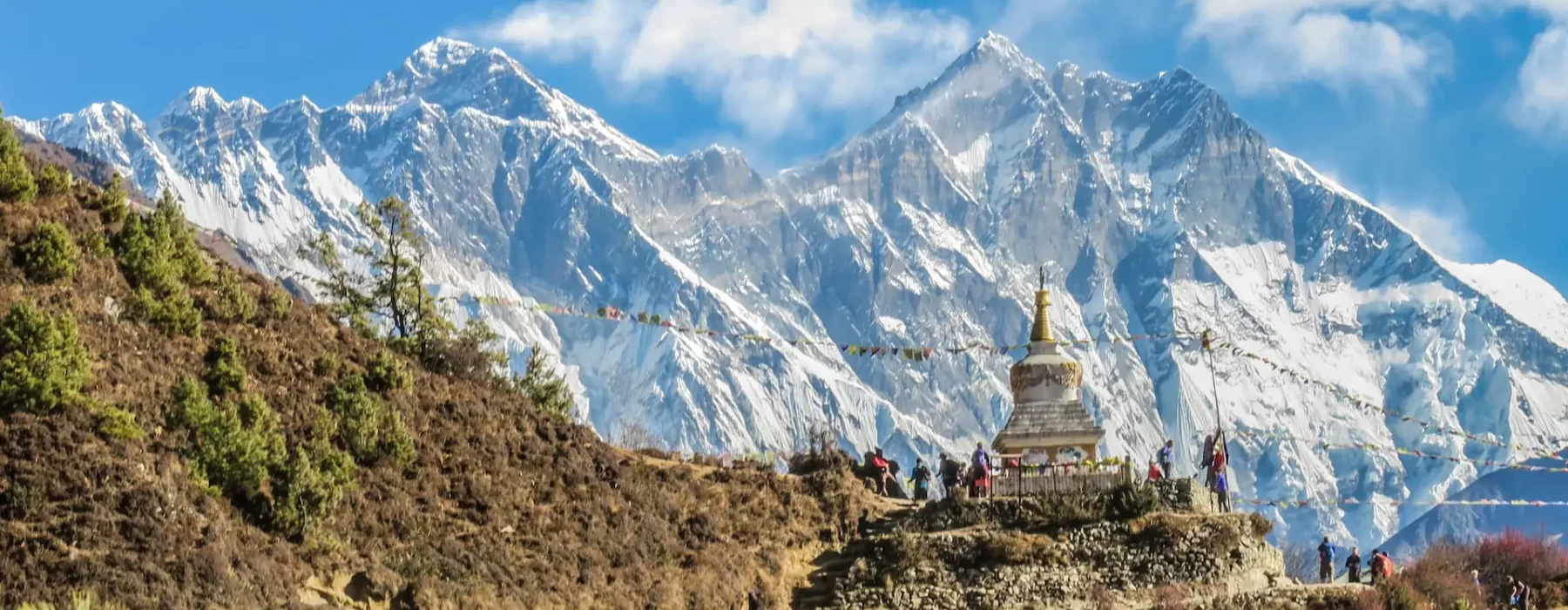
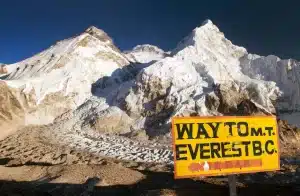
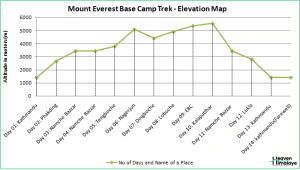
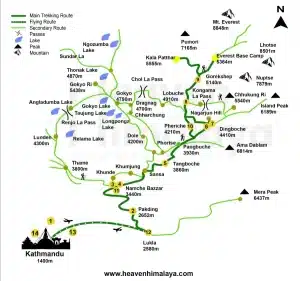
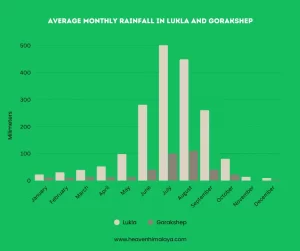


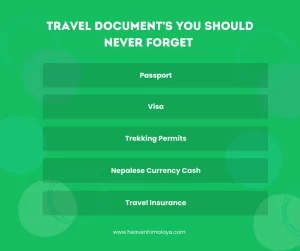

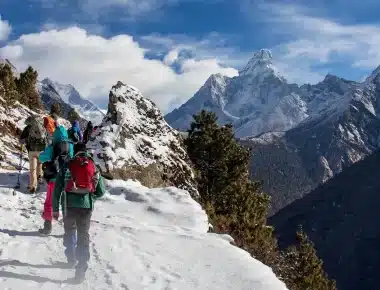
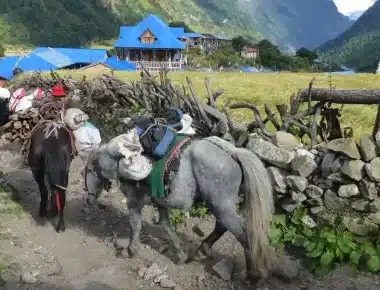
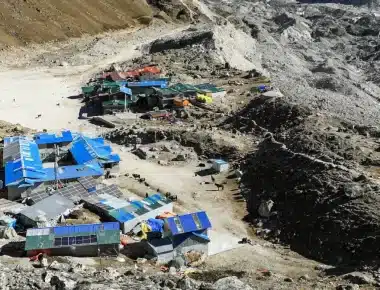
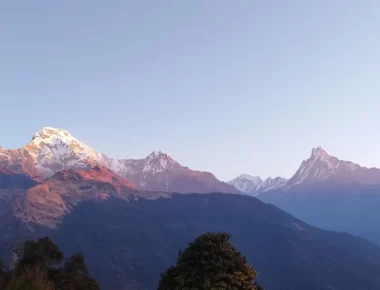

0 Comments